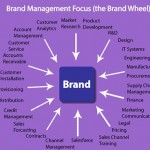Exploring customer profitability
At macro level, marketing performance appraisals focus on customers as a whole, on how they perceive the brand, what knowledge they have about it, the level of their satisfaction and how they respond to various marketing efforts (advertising, pricing strategies etc.). Managing customer relationships at micro level can be a very complex process, where performance management looks at improving the administrative aspects that can influence customer satisfaction (such as sound document flows with customers), as well as achieving long term goals (as the customer lifetime value). The major purpose of customer performance management is to measure and enhance profitable interactions with customers.
smartKPIs.com documented several customer metrics that can be good KPI candidates:
% Customers retained in a given time period
$ Lifetime value of a customer (LTV)
We invite you to explore our database of KPIs for more details on these metrics.
The current blog post aims at providing an in-depth view of customer profitability.
Why is exploring customer profitability important? Because it is vital to differentiate profitable customers from unprofitable ones, in order to either give up on the relationship with the latter ones, or to increase efforts for making them profitable.
$ Customer profitability allows analysis of the profits generated by a particular customer/customer group within a specific time frame. Measurement involves calculating the difference between the revenue generated by the customer and the costs associated with that customer relationship.
Often, it is quite difficult to make such measurement, to quantify all revenue and all costs associated with one customer. For example, in terms of revenue, to simplify things, companies often measure the value of the customer purchases performed in that data capture period. But customers can generate revenue by making a recommendation of the company to another customer that will make a purchase based on that. Or even by word-of-mouth advertising, dispensing the company of the costs for that advertising. So, companies will focus on the clear money flows with the customers.
Measurement can be facilitated by the use of various customer relationship management software. At first, the subtraction of the costs from the revenues generated by each customer (or group) is done. Then, customers will be sorted based on profit levels, usually in three categories:
- Top Tier: are the most profitable, probably the less price-sensitive and need to be retained. Usually, the strategy is to reward these customers so as to consolidate the relationship with them.
- Second Tier: they generate moderate profits, but may have a growth potential, so relationship needs to be fostered with them in the direction of transforming some in top tier customers.
- Third Tier: these are the unprofitable customers that affect company results. Efforts could be made in order to moving them to the superior levels, but if they can be identified at very early stages of the relationship, it might be the right thing to dispose of them.
Measuring customer profitability has a retroactive focus, but there is a metric that looks forward in the relationship with the customer: the customer lifetime value.
$ Customer lifetime value calculates the present value of the future cash-flows derived from the relationship with the customer.
It is based on forecasts that envisage the lifetime of a customer, on one hand, and the cash-flows that will be during that period, on the other hand. The value represents the upper limit of what the company is willing to pay to either acquire that customer or maintain the relationship with an existing one.
The calculation is done by multiplying the cash margin of each period to the present value of the estimated length of the customer relationship, as it follows:
$ Customer lifetime value = $ Period margin * [% Retention rate / (1 + % Discount rate – % Retention rate)]
- $ Period margin represents the per-period cash margin (revenue minus costs)
- % Retention rate is the rate at which the customer is estimated to be retained, based on past retention rates
- % Discount rate is the rate by which the future cash flows are brought to present
Many cautions have to be taken into consideration when applying this calculation formula, such as periods of inactivity in customer relationships or variations in the expected cash margin. When these apply, more complex models have to be used for calculation.
Further reading:
Kaplan, S., R. (2005) A Balanced Scorecard Approach To Measure Customer Profitability. Balanced Scorecard Report.
Cokins, G. (2004) How to Measure and Manage Customer Value and Customer Profitability. SAS White Paper.
Image Source:

Tags: KPI in Practice, Marketing performance, Performance Measurement






